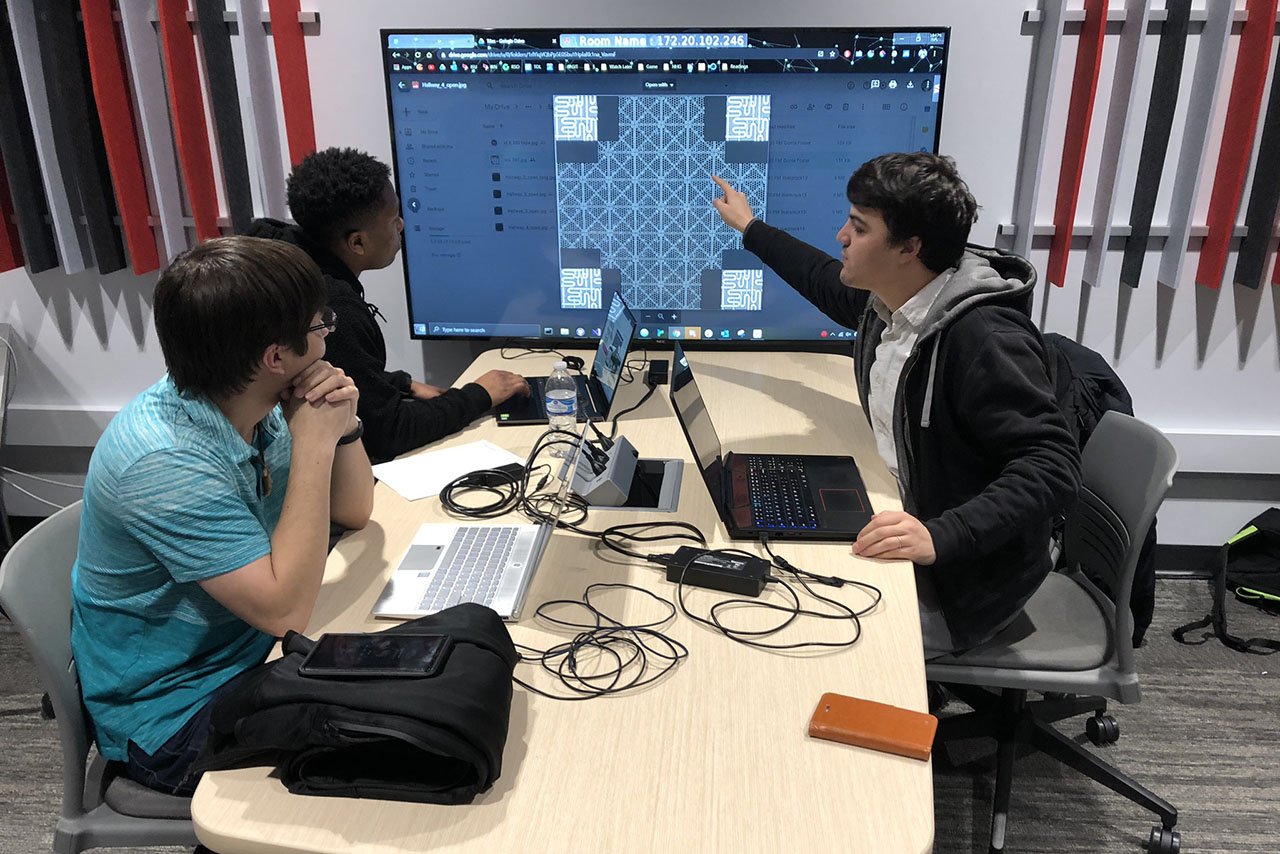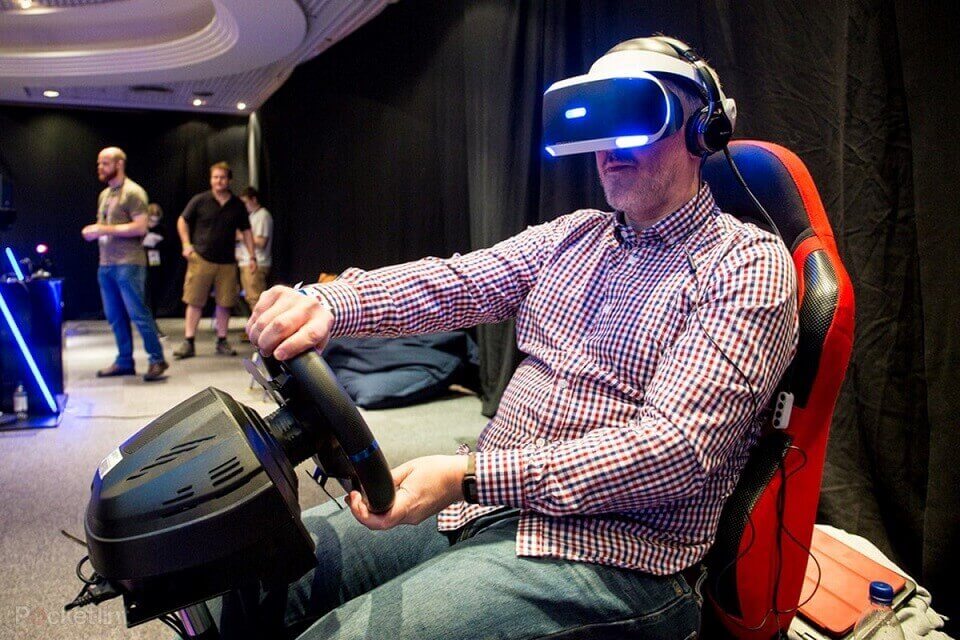Gaming Innovations Shaping the Future

Gaming has never been more thrilling, thanks to cutting-edge technology reshaping the industry. Picture this: you’re fully immersed in a virtual world, battling aliens, exploring ancient ruins, or simply living out your wildest fantasies, all from the comfort of your living room. Sounds like science fiction? Not anymore. The gaming industry is evolving at lightning speed, bringing innovations that make our wildest dreams a reality.
Overview
Ready to dive into the future of gaming? Let’s explore the latest tech innovations that are transforming the way we play. From the mesmerizing realms of Virtual Reality (VR) to the seamless convenience of Cloud Gaming, the gaming landscape is undergoing a revolution. Advanced AI is crafting smarter, more lifelike characters, and stunning graphics are delivering visual experiences that rival blockbuster movies. But that’s just the tip of the iceberg.
Virtual Reality (VR) and Augmented Reality (AR)

Overview
The magic of VR and AR is bringing games to life in ways we once only dreamed of. Imagine stepping into another world, where you can interact with your surroundings and experience adventures firsthand. That’s the power of VR and AR, two technologies that are revolutionizing gaming and creating unforgettable experiences.
Key Developments
- Crystal-Clear High-Resolution Displays: Gone are the days of pixelated visuals and blurry screens. Today’s VR headsets, like the Oculus Quest 2, boast high-resolution displays that offer crystal-clear images. This advancement makes the virtual world more realistic and engaging, enhancing the overall gaming experience.
- Advanced Motion Tracking for Real-Time Interaction: Motion tracking technology has come a long way, allowing for real-time interaction in VR environments. Systems like HTC Vive’s advanced motion tracking let players move naturally, with every gesture and movement replicated in the game. This creates a more intuitive and immersive experience, making you feel like you’re truly part of the game.
- Haptic Feedback for Immersive Sensations: Haptic feedback technology adds another layer of immersion by providing tactile sensations. Devices like the bHaptics Tactsuit let you feel every punch, shot, and impact, bringing a new level of realism to gaming. This feedback makes the virtual world feel more tangible, enhancing the emotional and physical connection to the game.
Impact on Gaming
Unprecedented Immersive Experiences: The combination of high-resolution displays, advanced motion tracking, and haptic feedback creates unprecedented immersive experiences. Players can lose themselves in virtual worlds, experiencing games in ways never before possible. The line between reality and the virtual world is blurring, making gaming more captivating than ever.
Birth of New Genres and Gameplay Mechanics: VR and AR have given rise to new genres and gameplay mechanics that weren’t possible with traditional gaming. From puzzle-solving in VR to augmented reality adventure games, these technologies are expanding the horizons of what games can be. Developers are continually experimenting, leading to innovative and unique gaming experiences.
Spotlight on Popular VR and AR Games
Several popular games have already showcased the potential of VR and AR. Titles like Beat Saber, with its rhythmic lightsaber gameplay, and Pokémon GO, which brings the Pokémon universe into the real world, have captivated millions of players. These games highlight the immersive and engaging possibilities of VR and AR, setting the stage for future innovations.
Artificial Intelligence (AI)
AI’s role as the unsung hero of gaming cannot be overstated. While flashy graphics and immersive environments often steal the spotlight, it’s the sophisticated AI behind the scenes that brings games to life, making them more engaging and challenging. From smarter NPCs to dynamic game worlds, AI is quietly revolutionizing the gaming experience.
Key Innovations
- Smarter, More Lifelike NPCs (Non-Player Characters): Gone are the days of predictable, robotic NPCs. Modern AI allows for NPCs that exhibit realistic behaviors, learn from player actions, and react in ways that make the game world feel alive. Games like The Last of Us Part II feature NPCs with advanced AI that can coordinate with each other and adapt their tactics, creating a more immersive and challenging experience.
- Endless Worlds Through Procedural Content Generation: AI-driven procedural content generation enables the creation of vast, varied game worlds that feel unique every time you play. Titles like No Man’s Sky use algorithms to generate entire galaxies, each with its own planets, ecosystems, and challenges. This technology ensures that no two playthroughs are the same, keeping the gameplay fresh and exciting.
- AI-Driven Real-Time Strategy and Decision-Making: In real-time strategy games, AI is essential for creating intelligent opponents that can strategize and adapt on the fly. Games like StarCraft II feature AI that can analyze the player’s strategies, make decisions in real-time, and provide a challenging adversary that tests the player’s tactical skills. This dynamic AI creates a more engaging and unpredictable gaming experience.
Impact on Gaming
Richer, More Complex Game Worlds: The advancements in AI technology contribute to richer, more complex game worlds. AI allows for environments that change and react based on player actions, creating a sense of immersion and realism. These dynamic worlds are filled with believable characters and intricate storylines, enhancing the overall gaming experience.
Adaptive, Personalized Gameplay Experiences: AI enables games to adapt to individual players, offering personalized experiences that match their playstyle and skill level. Games like Left 4 Dead use AI directors to adjust the difficulty and pacing based on player performance, ensuring that every playthrough is uniquely tailored and challenging. This adaptability makes games more engaging and enjoyable for a wider range of players.
Showcase of Games Pushing AI Boundaries
Several games have pushed the boundaries of what AI can achieve. Red Dead Redemption 2 features an incredibly detailed world with AI-driven wildlife and NPCs that go about their daily routines, reacting to the player’s actions in believable ways. F.E.A.R. is another example, with enemy AI that uses squad tactics and flanking maneuvers, making combat encounters intense and unpredictable.
Cloud Gaming

The rise of gaming without borders is here, thanks to the advent of cloud gaming. Imagine playing your favorite video games on any device, anywhere, without the need for a powerful gaming rig. Cloud gaming is transforming the way we access and enjoy games, making high-quality gaming more accessible than ever.
Key Players
- Google Stadia: Google Stadia is one of the major players in the cloud gaming market. With its powerful servers and extensive game library, Stadia allows users to stream games directly to their devices. This platform leverages the power of generative AI to optimize game performance and reduce latency, providing a smooth gaming experience.
- NVIDIA GeForce Now: NVIDIA GeForce Now is another key player, offering a robust cloud gaming service that supports a wide range of titles. By tapping into NVIDIA’s powerful GPUs, GeForce Now delivers stunning graphics and fast performance, making it a favorite among gamers who want to enjoy 3D games without investing in high-end hardware.
- Xbox Cloud Gaming (Project xCloud): Xbox Cloud Gaming (formerly known as Project xCloud) is Microsoft’s entry into the cloud gaming arena. Integrated with the Xbox Game Pass Ultimate subscription, it provides access to a vast library of games that can be streamed to various devices. This platform is particularly appealing to people who are already part of the Xbox ecosystem.
Impact on Gaming
Play Anywhere, Anytime Convenience: Cloud gaming offers unparalleled convenience, allowing players to access their favorite games from virtually anywhere. Whether you’re at home, on the go, or at a friend’s house, all you need is a stable internet connection to dive into your games. This flexibility is transforming the way people play video games, breaking down barriers and making gaming more inclusive.
No Need for Expensive Hardware: One of the biggest advantages of cloud gaming is that it eliminates the need for expensive hardware. Game developers and platforms can deliver high-quality experiences without requiring players to invest in powerful gaming PCs or consoles. This democratizes gaming, making it more accessible to a broader audience and potentially increasing the number of gamers by billions.
Challenges and Future Horizons for Cloud Gaming
While cloud gaming holds immense potential, it also faces several challenges. Latency and bandwidth issues can affect the gaming experience, particularly for fast-paced or competitive games. Moreover, the reliance on stable internet connections means that not all regions can fully benefit from this technology. However, with ongoing advancements in generative AI, these challenges are gradually being addressed.
The future horizons for cloud gaming are bright. As technology continues to evolve, we can expect even more seamless integration between devices and platforms, including innovative features that enhance gameplay. For instance, the use of AI in game development could lead to more dynamic and adaptive gaming experiences, further blurring the lines between traditional and cloud gaming.
Graphics and Performance Enhancements

The gaming world is witnessing visual and performance leaps that are redefining the entire experience. With cutting-edge technology, games now look and perform better than ever before. Let’s explore some of the key innovations that are driving this transformation and making games more visually stunning and smooth to play.
Key Innovations
- Stunning Realism with Ray Tracing: Ray tracing is a groundbreaking technology that simulates the way light interacts with objects, creating incredibly realistic lighting, reflections, and shadows. NVIDIA’s RTX series has brought this technology to the forefront, making games look more lifelike than ever. Whether it’s the flickering light of a torch in a dark dungeon or the glint of sunlight on a polished car, ray tracing adds a new level of immersion.
- DLSS (Deep Learning Super Sampling) for Better Graphics: DLSS (Deep Learning Super Sampling) leverages AI to boost game performance while maintaining high visual quality. Developed by NVIDIA, DLSS uses deep learning algorithms to render lower resolution images and then upscale them to higher resolutions. This results in stunning graphics with smoother frame rates, even on less powerful hardware. Games like Cyberpunk 2077 showcase how DLSS can significantly enhance visual fidelity without compromising performance.
- 4K and 8K Resolution Support for Breathtaking Detail: As display technology advances, 4K and even 8K resolution support are becoming more common in gaming. These ultra-high resolutions offer breathtaking detail, making every texture and object in the game world crisp and clear. Consoles like the PlayStation 5 and the Xbox Series X are designed to support these resolutions, providing gamers with an unparalleled visual experience.
Impact on Gaming
Unmatched Visual Fidelity: The advancements in ray tracing, DLSS, and high-resolution support have resulted in unmatched visual fidelity in games. Players can now enjoy worlds that are not only more realistic but also more visually appealing. The fine details, realistic lighting, and high-resolution textures make the gaming experience more immersive and engaging.
Smoother, Faster Gameplay: These technological innovations don’t just improve how games look; they also enhance performance. DLSS, in particular, allows games to run at higher frame rates without sacrificing visual quality. This means smoother, faster gameplay, which is crucial for both casual gamers and competitive players. The combination of stunning visuals and high performance creates a more enjoyable and responsive gaming experience.
Examples of Games Setting New Visual Standards
Several games have set new visual standards thanks to these innovations. Control by Remedy Entertainment uses ray tracing to create a visually stunning and eerie atmosphere. Metro Exodus showcases the power of high-resolution textures and realistic lighting to create an immersive post-apocalyptic world. These games, among others, demonstrate how graphics and performance enhancements are pushing the boundaries of what’s possible in gaming.
Esports and Competitive Gaming
The explosive growth of esports is nothing short of phenomenal. What once started as small gatherings of gaming enthusiasts has now evolved into a global phenomenon, attracting millions of viewers and players. Esports is reshaping the gaming landscape, turning professional gaming into a mainstream career and a major entertainment industry.
Key Developments
- Blazing Fast Internet and Low-Latency Networks: One of the critical factors driving the growth of esports is the availability of blazing fast internet and low-latency networks. High-speed connections are essential for competitive gaming, where milliseconds can make the difference between victory and defeat. Services like Google Fiber and Verizon Fios provide the speed and reliability needed for seamless online play, ensuring that players can compete at the highest levels without lag.
- Cutting-Edge Streaming Technologies: Streaming technologies have revolutionized how esports are consumed and enjoyed. Platforms like Twitch, YouTube Gaming, and Facebook Gaming allow fans to watch live competitions from anywhere in the world. Advanced streaming tech ensures high-quality video feeds with minimal delay, making it easy for millions of viewers to follow their favorite teams and players in real-time.
- Esports-Specific Hardware Advancements: Hardware advancements specifically designed for esports have also played a crucial role in the industry’s growth. Products like Razer’s gaming mice and keyboards, HyperX’s headsets, and Alienware’s powerful gaming PCs provide the precision, speed, and reliability that professional gamers need. These innovations help players perform at their best and push the boundaries of what’s possible in competitive gaming.
Impact on Gaming
Professional Gaming Leagues’ Rise to Prominence: The rise of professional gaming leagues has brought esports into the mainstream. Leagues like the Overwatch League and the League of Legends Championship Series feature structured seasons, major tournaments, and substantial prize pools. These leagues attract top talent from around the world, providing a platform for gamers to showcase their skills and pursue careers in esports.
Engaging Millions of Viewers Worldwide: Esports has a massive global audience, with millions of viewers tuning in to watch live events and streams. Major tournaments like The International for Dota 2 and the Fortnite World Cup draw huge viewership, rivaling traditional sports in popularity. This widespread engagement has turned esports into a major entertainment industry, attracting sponsors, advertisers, and media coverage.
Economic and Cultural Influence of Esports: The economic and cultural influence of esports is significant. The industry generates billions of dollars in revenue through sponsorships, advertising, ticket sales, and merchandise. Additionally, esports has fostered a vibrant community culture, bringing together fans and players from diverse backgrounds. This cultural impact is evident in the growing acceptance of gaming as a legitimate profession and form of entertainment, influencing everything from fashion to mainstream media.
Cross-Platform Play and Integration
Breaking down barriers with cross-platform play is revolutionizing how we interact and enjoy games. No longer confined to a single device or platform, gamers can now play with friends and compete against others regardless of the hardware they use. This seamless integration is enhancing the gaming experience, making it more inclusive and connected.
Key Innovations
- Unified Player Bases Across Devices: One of the most significant innovations in cross-platform play is the unification of player bases across different devices. Games like Fortnite and Minecraft have successfully brought together players from consoles, PCs, and mobile devices into a single, cohesive community. This unity allows for a larger, more diverse player base, ensuring that there are always people to play with, no matter the platform.
- Seamless Transitions from Console to PC to Mobile: Seamless transitions between devices are a game-changer for modern gaming. Services like Xbox Play Anywhere and platforms such as Genshin Impact enable players to switch from console to PC to mobile without losing progress. This flexibility ensures that players can continue their adventures and compete with friends no matter where they are or what device they have on hand.
- Cross-Platform Multiplayer and Game Progression: Cross-platform multiplayer and unified game progression are central to the cross-platform experience. Games that support these features, such as Call of Duty: Warzone and Rocket League, allow players to compete and collaborate across different platforms while maintaining their progress and in-game achievements. This ensures a consistent and rewarding experience, regardless of the device being used.
Impact on Gaming
Enhanced Community and Social Connectivity: Cross-platform play significantly enhances community and social connectivity. By breaking down the walls between different gaming systems, players can connect with a wider range of friends and fellow gamers. This connectivity fosters stronger communities and makes it easier to organize multiplayer sessions, join clans, and participate in large-scale events.
Greater Accessibility for All Players: Cross-platform integration promotes greater accessibility in gaming. Players who may not have access to high-end gaming PCs or the latest consoles can still enjoy popular games on their mobile devices or older hardware. This inclusivity ensures that more people can participate in the gaming community, making gaming more universal and widespread.
Successful Cross-Platform Games Leading the Way
Several successful cross-platform games are leading the way in demonstrating the benefits of this integration. Titles like Apex Legends, Destiny 2, and Among Us have shown how cross-platform play can create vibrant, interconnected communities and enhance the overall gaming experience. These games are setting new standards for the industry and paving the way for future innovations in cross-platform compatibility.
